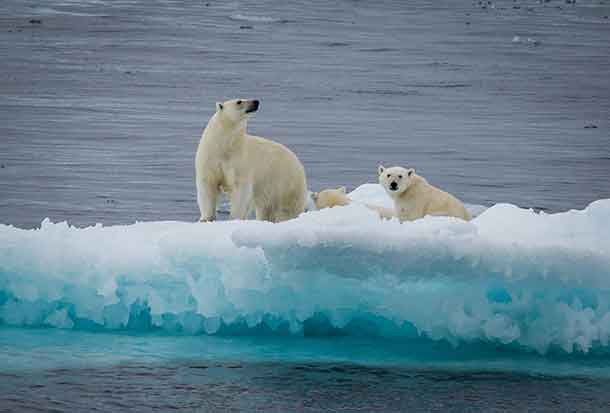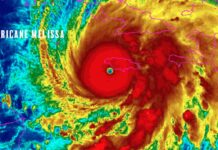
No, Justin and Catherine, carbon dioxide is NOT pollution
By Tom Harris
OTTAWA – CLIMATE – “Reducing carbon pollution through Canadian ingenuity” – unbelievably, that is what the federal government subtitled their Low Carbon Economy Challenge ‘Backgrounder’when the $500 million program was unveiled on March 14th in Vancouver by Environment and Climate Change Canada Minister Catherine McKenna. The challenge is part of the federal government’s multi-billion-dollar Low Carbon Economy Fund.
Nowhere in the Backgrounder do they actually explain what specific gas they are they are primarily talking about. That’s undoubtedly because even grade school children would then realize that our government is wasting billions trying to control a non-pollutant.
Similarly, on March 6th at a conference on Investing Canadian Innovation at the University of Ottawa, Prime Minister Justin Trudeau told the audience, “If the entire country is going to move forward, as we are, on a national price on carbon, a framework that prices carbon pollution, either through a carbon tax or through a cap and trade system, depending on what the provinces want, we’re actually going to reach our carbon emission, reduction targets….we’re putting in a national price on carbon…”
Surely someone in the U of O audience realized that this is nonsense–we are not “putting a price on carbon.” ‘Carbon’ is a solid, naturally occurring, non-toxic element found in all living things. It forms thousands of compounds, much more than any other element. Medicines, trees, oil, even our own bodies are made of carbon compounds.
Pure carbon occurs in nature mainly in the forms of graphite and diamond. So, what is the “carbon pollution” McKenna and Trudeau are concerned about? Are they speaking about soot emissions reduction? Amorphous carbon, carbon without structure, is the main ingredient in soot and that is a pollutant important to control. Power plants have already done a good job reducing soot, as they have other pollutants.
No, the Trudeau government is crusading against emissions of one specific compound of carbon, namely carbon dioxide (CO2). Ignoring the oxygen atoms and calling CO2‘carbon’ makes about as much sense as ignoring the oxygen in water (H2O) and calling it ‘hydrogen.’ That might be an effective PR tool for anti-hydro power campaigners, but most people would regard such a communications trick ridiculous.
This error is not harmless. It is part of the way language has been distorted to bolster concerns about human-caused climate change. Calling CO2 carbon, or worse, carbon pollution, as Trudeau and McKenna often do, encourages people to think of it as something dirty and so important to restrict. This mistake is so entrenched that even those who oppose fashionable beliefs about climate change make it often.
Calling CO2 by its proper name would help people remember that, regardless of its role in climate change (a point of intense debate among scientists), CO2 is really an invisible gas essential to plant photosynthesis, and so to all life. We are actually near the lowest level of CO2 in Earth’s history. During a multi-million-year period around 440 million years ago, CO2 was over 1000% of today’s level while Earth was stuck in the coldest period of the last half-billion years. The climate models’ assumption that temperature is driven by CO2 is clearly wrong.
While he may not have a deep understanding of climate science, one would assume that Trudeau, a self-professed ‘science nerd,’ would realize that commercial greenhouse operators routinely run their internal atmospheres at up to 1,500 parts per million (ppm) CO2 concentration for a good reason. Plants inside grow far more efficiently than at the 400 ppm in the outside atmosphere. Yet there is no hint of any consequent temperature rise.
Climate Change Reconsidered II: Biological Impacts, a report from the Nongovernmental International Panel on Climate Change, cites over 1,000 peer-reviewed studies that document rising productivity of forests and grasslands as CO2 levels have increased, not just in recent decades, but in past centuries.
And increasing CO2 levels poses no direct hazard to human health. CO2 concentrations in submarines can reach levels above 10,000 ppm, 25 times current atmospheric levels, with no harmful effects on the crew.
Activists say that there will be important pollution reduction co-benefits to CO2 emission control. Yet the US Environmental Protection Agency’s own data show that total emissions of six major air pollutants dropped 62% since 1980 even though CO2 emissions increased by 14%. Using climate regulations to reduce pollution would obviously be an expensive mistake.
Politically correct but deceptive language is dangerous because it dumbs down important science debates and influences millions of people, and ultimately, important government policy. People educated in the sciences, especially those at leading institutions such as the University of Ottawa, must complain loudly whenever they hear such mistakes!
Tom Harris is executive director of the Ottawa, Canada-based International Climate Science Coalition.






